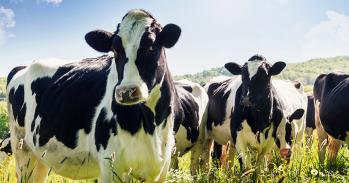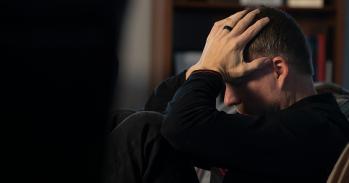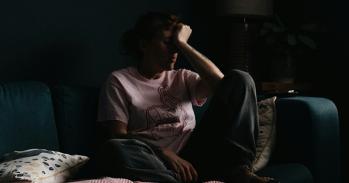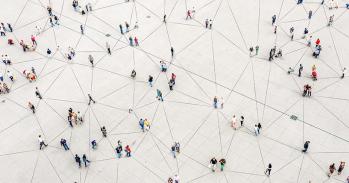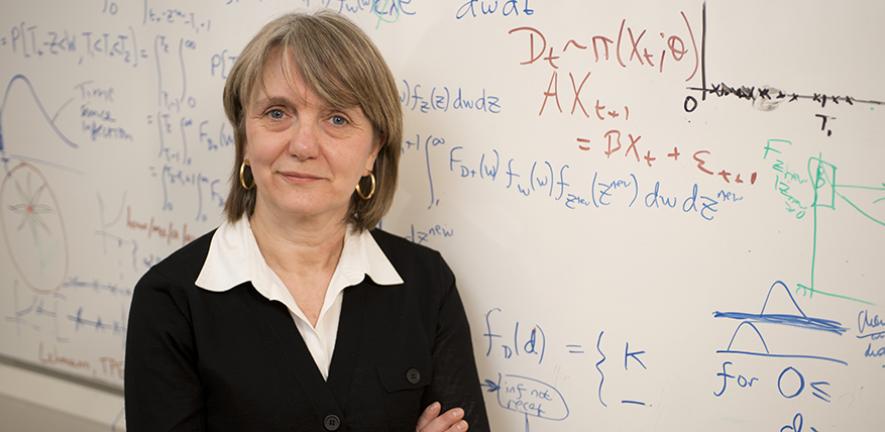
Since January this year, Daniela De Angelis and her team have been informing the UK Government’s response to the COVID-19 pandemic. Their real-time model of transmission of the virus is helping to track and predict its course as information accumulates over time.
Since January this year, Daniela De Angelis and her team have been informing the UK Government’s response to the COVID-19 pandemic. Their real-time model of transmission of the virus is helping to track and predict its course as information accumulates over time.
This article is part of a series in which we speak to some of the many Cambridge researchers tackling COVID-19. For other articles about our latest COVID-19-related research, click here.
I work for the Medical Research Council (MRC) Biostatistics Unit (BSU), a department in the University’s School of Clinical Medicine. I am a Programme Leader and Deputy Director of the Unit. The Unit is physically based at the Cambridge Institute of Public Health on the Cambridge Biomedical Campus. However since lockdown, all members of the Unit - including myself - have been working from home.
My research focuses on developing and applying statistical methods to characterise epidemics, using information on different aspects of the disease. This includes estimating transmission, severity (eg. the proportion of infected individuals who die), and reconstructing and predicting epidemics’ evolution. The goal is to provide accurate and timely quantitative support to the implementation and evaluation of public health policies. Historically we have worked on HIV, hepatitis and influenza, but since January this year our expertise has been used to understand the COVID-19 pandemic.
One of the most critical aspects of our COVID-19 work is to provide regular ‘now-casts’ and ‘forecasts’. ‘Now-casts’ refer to estimates of the current level of key epidemiological quantities, in our case, estimates of ongoing transmission and the number of new infections. ‘Forecasts’ mean estimates of future levels, in this instance, of the future number of deaths. Our results feed directly to the Scientific Pandemic Influenza sub-group on Modelling (SPI-M), a SAGE sub-group, and to regional Public Health England (PHE) teams.
I build models that allow us to reconstruct the pandemic and predict its future course. Our work on nowcasting and forecasting uses a model of disease transmission, data on daily COVID-19 deaths of infected individuals (by NHS region and age group), published information on the risk of dying and the time from infection to death, and data on antibodies levels in the population. This allows us to reconstruct the number of new COVID-19 infections and estimate changes in transmission (the famous reproduction number R) over time; and predict the number of COVID-19 deaths in different NHS regions and age groups.
I think the biggest challenge in dealing with COVID-19 is to understand what drives transmission of infection, and how to best use this knowledge to keep the pandemic under control - including when to introduce social restrictions and when to lift them. It is also important to use communication effectively, to build public understanding and trust so that people can react responsibly to the advice and recommendations given by the government and the scientific community.
There has been an enormous effort from the whole scientific community to contribute to the understanding of this pandemic. However, often these efforts have not been well coordinated and there are still lots of aspects of the SARS-CoV-2 infection that are not understood. We need to develop a more collaborative approach to working, building multidisciplinary teams where expertise is shared for a faster advancement of science.
I would like to see the creation of infrastructures that enable effective sharing of sensitive data. So much time has been spent in this pandemic waiting for authorised access to information that in an emergency situation should be available to any group with relevant expertise. It’s an important lesson to have learned, and we need to be better prepared for similar challenges in the future.
This has been one of the most challenging and exciting times to be in scientific research. I am glad to be playing a role in understanding this pandemic and making a difference to public health. Tracking COVID-19 will continue to be a major priority for my team at the BSU. The many important questions that still remain will keep us busy for years.
When the pandemic is over I’m looking forward to a nice holiday, and going back to normal life to enjoy the company of family and friends!
Professor Daniela De Angelis is Deputy Director of the MRC Biostatistics Unit. Read more about the Unit’s Nowcasting and Forecasting of COVID-19 here.
How you can support Cambridge’s COVID-19 research

The text in this work is licensed under a Creative Commons Attribution 4.0 International License. Images, including our videos, are Copyright ©University of Cambridge and licensors/contributors as identified. All rights reserved. We make our image and video content available in a number of ways – as here, on our main website under its Terms and conditions, and on a range of channels including social media that permit your use and sharing of our content under their respective Terms.

